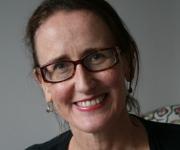“ ‘MIRACLE’ drugs put thousands at risk,” trumpeted a recent front-page headline in a Sydney newspaper.
“Thousands of Australians could be taken off cholesterol-lowering medications because of mounting evidence they increase the risk of diabetes and dementia,” the Sydney Morning Herald article began.
The rest of the story about US Food and Drug Administration’s changes to safety labelling for statins actually was quite accurate, but most readers probably didn’t get beyond the scary words in the headline and first paragraph.
For the record, the US regulator did not warn about dementia, but acknowledged potential cognitive effects (generally non-serious and reversible), as well as reports of increased blood sugar and HbA1c levels in people using the drugs.
“FDA continues to believe that the cardiovascular benefits of statins outweigh these small increased risks,” the regulator said.
So how did such a mild warning turn into a raft of media stories — the Herald was just one of many — that caused consternation in patients and may have prompted some to discontinue essential medication?
I’d put it down to a process journalists sometimes call “sexing up” — a relatively dull story that might have been happy pottering around on page seven is turned into a page-one lead by the addition of conflict, dramatic language and, where possible, a good dose of fear.
“Thousands at risk”, “mounting evidence”, “dementia” and “diabetes” did that job in the Herald story. And, somehow, describing a medication as a “miracle drug” makes it seem so much worse when it’s shown to have side effects.
The journalist in this case went on to interview a range of experts and provide a balanced discussion of risks and benefits — even including numbers needed to treat (150 to prevent a major cardiac event) and harm (500 for each new case of diabetes).
But much of that quality reporting was undermined by the sensationalist headline and opening paragraph, which may not actually have been the journalist’s responsibility. Reporters don’t write their own headlines and strange things can happen to articles once an editor decides they’re going on the front page.
In the highly competitive world of the news media, these sorts of distortions are all too common among news outlets.
Associate Professor David Sullivan, a lipid specialist at Sydney’s Royal Prince Alfred Hospital, described reporting of the US move as “rather alarmist” and in some cases “almost a bit mischievous”.
“It really casts a doubt in [the patient’s] mind and undermines the trust in the therapeutic relationship with their doctors”, he told Radio National’s Health Report.
“The case is made in this FDA announcement that people should not stop taking statins … but really that message isn’t delivered to the general public.”
Perhaps the regulator could have done more to get that message across, but it’s always difficult to prevent sensationalist reporting when safety concerns are raised about drugs that are as widely prescribed as statins.
The irony is that these kinds of news articles probably pose a greater risk to patients than any drug — people frightened into discontinuing statins may go on to have a major cardiac event as a result.
Imagine if we could label media reports with a number needed to harm as we do drugs.
Jane McCredie is a Sydney-based science and medicine writer.
Posted 12 March 2012

 more_vert
more_vert
The media is also used by the industry (the entrepreneurial medicine, that is) to sex up health stories (?) for its benefit. These stories are “full of silken prose and soothing medical euphemisms” when it comes to describing elective, surgical procedures, such as breast ‘augmentation’. The text often somehow manages to eliminate pain, minimise injury and turns it into a desirable ‘must-have’. Language is the tool to assert influence and power…
The media services the industry rather well in this act of mutual self-interest. See
http://www.dailylife.com.au/news-and-views/dl-opinion/normalising-breast…
To skeptic who writes “Am I missing something here?”
Indeed you are. There is no such thing as a drug or even a natural substance taken as a treatment for any number of conditions which doesn’t have side effects.
There are pros and cons i.e. side effects in every drug treatment and the assessment is whether the good effects outweigh the bad and in particular the frequency with which the side effects occur. Just because there are a few bad and hopefully reversible side effects shouldn’t mean that we shouldn’t prescribe medications for the greater benefit of mankind!
Strange. Here we have a conventional medication that is associated with an increase in arthropathy, body pain, depression, dementia just to name a few, and all our “independent” experts stand up in its defence. Despite the evidence of harm, these same experts want us to go on using these very useful medications with gay abandon.
But, one, just one patient out of how many millions had the dubious experience of developing a kidney stone, and the experts want us to ban the use of a harmless substance called Vit C.
But am I missing something here?
The same mischievous and sensationalist distortion of journalists in their reporting after the WHI studies caused consternation in patients and frightened many into discontinuing HRT